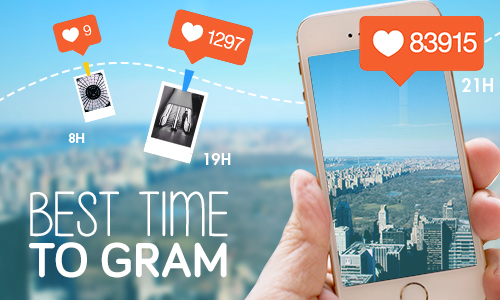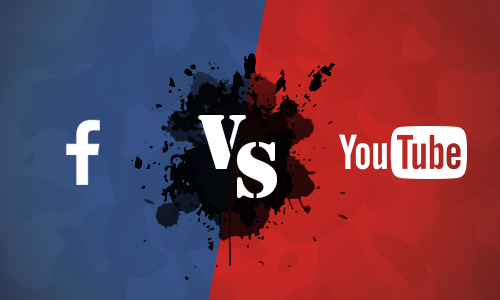What are conversations like on the social networks Facebook, Twitter, and Instagram? What are the specifics of each network? How do you manage messages from members of a brand’s community?
Nowadays it is essential for brands to know how to manage conversations with their social network users. Managing an e-reputation generates feedback and comments - constructive or less so. The Community Manager is the first person to be reached and needs to respond to messages from his community, whether they are clients or not.
These messages arrive in many forms: opinions, compliments and recommendations, questions, product feedback, criticisms, gratuitous attacks, or rumors. They are frequently published on social networks: sometimes on Facebook, occasionally on Instagram, and most often on Twitter which is THE social network for conversations.
- What are conversations like on the social networks Facebook, Twitter, and Instagram?
Facebook comments: an internet user can leave a comment on any of the posts on a brand’s page.
Private Facebook messages: they can send a message from the Facebook page which is only visible to its administrators.
Instagram Tag: a brand can be tagged on a photo.
Instagram Direct Messages: a user can send you a message only you can see.
Twitter Mentions: from their pseudonym they can quite simply mention a brand, preceded by “@”.
Twitter Direct Message: they can only DM if the brand follows them. But the DM function can be extended to a group of people. Effectively, the Community Manager can have conversations with their followers, who can participate in the group conversation without needing to follow each other.
Twitter Hashtags, Instagram, even Facebook to some extent: they use a “#” followed by the name of the brand or a product.
It’s also possible that a user doesn’t mention your brand by name, so it may be difficult (if it’s a public conversation) or even impossible (if it’s private) to identify the conversation as part of your e-reputation management.
- What are the specific features of Facebook, Twitter, and Instagram ?
Deletion:
On Facebook: a CM can delete a comment on his page, and he can also delete anything posted directly on his page by a user.
On Twitter: a tweet belongs to the tweeter so it cannot be deleted by the Community Manager.
On Instagram: this mobile app allows you to delete an unwelcome comment or a tag on a photo.
Reposting:
On Facebook and Twitter, simple social actions such as “like” or RT allow members to show support for comments.
On Instagram, it can only be done through the +1 system or by mentioning an original comment in a comment.
Emoticons:
Emoticons (or emojis) are supported by all the platforms and are regularly used by community members.
- How do you manage user conversations and thus, part of the brand’s e-reputation?
The primary value of exchanges is closeness. Managing conversations allows brands to reinforce their links with their community. Other objectives can be: reducing the impact of negative statements, or, the reverse, increasing the impact of positive statements. Good e-reputation management can also increase brand confidence and thus brand loyalty.
First, brands listen to conversations on social networks: they reply to questions, take notice of a problem, identify its nature and what effect it can have on the brand, on its field of activity or on events that are related to the activity.
With Twitter being a social network that is particularly well-adapted to conversations, we have decided to spotlight those that have recently been held about Over-Graph on this network.
Brands are regularly asked questions. Here, a user asked us if we are going to integrate a new social network, specifically Pinterest.
Hey @Over_Graph, une implantation de #Pinterest pour bientôt ? Ce serait vraiment le top pour manager l'ensemble des comptes #SocialMedia !
— Kevin Gourdon Eden ♠ (@KevinGourdon) 9 Mars 2015
Sometimes questions are asked about competitors. Here, it’s a matter of emphasizing the brand’s strong points while staying objective and asking people for their opinion. Here are two examples where Over-Graph is questioned about Hootsuite and Buffer.
@Over_Graph @camj59 par rapport a hootsuite, quels sont les avantages ?
— Arnaud Joly (@arnojoly) 1 Mars 2015
Over Graph, une alternative à Hootsuite ou Buffer ? #SocialMedia #CM
http://t.co/9Jw53QsvnT
— Jean Decherf (@jean_decherf) 26 Février 2015
Another situation: a question about a given topic. The brand decides to reply to a tweet, even if it is not mentioned by name. Here, Over-Graph replies to a question about a function on a social media and links to the tool.
@_aroline Hello. Je vous confirme qu'il est bien possible de programmer l'ajout d'une photo à un album FB existant. pic.twitter.com/AnASESiLSk
— Over-Graph (@Over_Graph) 6 Mars 2015
Then, brands can also react to facts or events rapidly, thoughtfully, and sometimes humorously. Here, we are reacting to a tweet about a particular event that could interest our users, the Community Managers.
@AnneBres Heureusement que la #SaintPatrick est là pour apporter un peu de légèreté à ce programme bien chargé ! Bonne semaine à vous !
— Over-Graph (@Over_Graph) 17 Mars 2015
Brands can also ask their communities questions, and they can express their agreement or disagreement. Here it’s also in their interest to follow the conversations so that they can respond fully to their clients’ questions and expectations.
Le “Meilleur moment pour publier” sur les réseaux sociaux existe-t-il vraiment ? http://t.co/Lb1f0lIHUb #CM pic.twitter.com/oGLny4wEfQ
— Over-Graph (@Over_Graph) 10 Mars 2015
Another possible conversation: use social networks to conduct free surveys of your community.
Où devriez-vous publier vos images ? #Pinterest ou #Instagram ? http://t.co/KUzPu3lY1S pic.twitter.com/OGrZqIJ5mf
— Over-Graph (@Over_Graph) 25 Février 2015
Even if the formats and the mechanics are different from one platform to another, here are our
2 recommendations:
1/ Whatever the platform, never forget that a conversation takes place between 2 human beings and that you need to respect the normal rules of communication.
2/ Don’t content yourself with notifications. Go looking for conversations that aren’t aimed directly at you and avoid unpleasant surprises.
Conversation has always been one of the ways to unify a community and if it seems even more important today, that is in response to the expectations of social network users. The conversations that you are going to have with your community are part of forging your brand’s identity on social networks. So, when you are in front of your screen, just like in life, say it with a smile. ![]()

